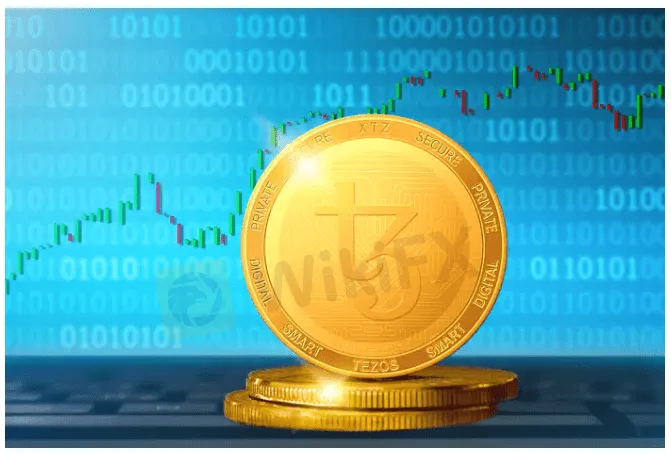简体中文
繁體中文
English
Pусский
日本語
ภาษาไทย
Tiếng Việt
Bahasa Indonesia
Español
हिन्दी
Filippiiniläinen
Français
Deutsch
Português
Türkçe
한국어
العربية
Tezos‘s Tenderbake Upgrade Goes Live, Here’s How XTZ can React
Abstract:Tezos, a proof-of-stake blockchain, has changed its consensus algorithm to lower block times and improve performance.

Key Insights:
Tezos has deployed a major upgrade, changing its consensus algorithm.
The upgrade could facilitate lower block times, produce faster transactions, and smoother-running applications.
Despite the ecosystem-centric updates, XTZ is down 55.37% from its ATH.
Tezos – a decentralized open-source blockchain, recently activated a significant upgrade, changing its consensus algorithm in its ninth upgrade.
Improved Performance
Tezos is a proof-of-stake blockchain that can execute peer-to-peer transactions and serve as a platform for deploying smart contracts. A recent press release revealed that the upgrade is code-named Ithaca 2 and replaces the current consensus algorithm, known as Emmy, with Tenderbake.
The new upgrade is set to enable lower block times, producing faster transactions and smoother-running applications. As part of Ithaca 2, the Tezos blockchain prepares for scalability efforts, including rollups for WebAssembly and Ethereum Virtual Machine (EVM) compatibility and pre-checking, an efficiency-enhancing validation scheme.
The Ithaca 2 upgrade also aims to reduce the requirement to become a network validator by 25% from 8,000 tez (the Tezos digital token) to 6,000 tez, making the networks decentralization stronger.
Most importantly, the new Tenderbake consensus algorithm enables lower block times, resulting in faster transactions and smoother-running dAapps on Tezos.
Tezos‘s Growth and XTZ’s Rise
Tezoss growth over the last year has been up to the mark with growth both in terms of user activity and the price rise of its native token XTZ. Data suggests that smart contract calls increased per month from 100,000 in January 2021 to over 6.2 million in January 2022.
Furthermore, Tezos saw key market integrations with brands such as Red Bull Racing, Manchester United, The Gap, and Kia. Notably, Tezoss price saw no significant uptick at the time of writing despite the positive market momentum and ecosystem-centric upgrades.
Tezos traded at $3.78, noting 0.92% daily and 7.25% weekly gains. XTZs relative strength index on a one-day chart was oscillating in the oversold zone, signifying higher buying pressure in the market. Still, there was no significant price implication of the same.

With BTC and the larger market‘s momentum looking rangebound at press time, XTZ could witness some short-term pullback. Nonetheless, with the network developing XTZ’s price in the long term could see a decent push.

Disclaimer:
The views in this article only represent the author's personal views, and do not constitute investment advice on this platform. This platform does not guarantee the accuracy, completeness and timeliness of the information in the article, and will not be liable for any loss caused by the use of or reliance on the information in the article.
Read more

Never Heard of Dynasty Trade? Here's Why You Should Be Worried
Have you heard this name before? No , it’s time you do because staying unaware could cost you. This platform is currently active in the forex trading and has been linked to several suspicious activities. Even if you’ve never dealt with it directly, there’s a chance it could reach out to you through ads, calls, messages, or social media. That’s why it’s important to know the red flags in advance.

Want to Deposit in the EVM Prime Platform? Stop Before You Lose It ALL
Contemplating forex investments in the EVM Prime platform? Think again! We empathize with those who have been bearing losses after losses with EVM Prime. We don't want you to be its next victim. Read this story that has investor complaints about EVM Prime.

WEEKLY SCAM BROKERS LIST IS OUT! Check it now
If you missed this week's fraud brokers list and are finding it difficult to track them one by one — don’t worry! We’ve brought together all the scam brokers you need to avoid, all in one place. Check this list now to stay alert and protect yourself from fraudulent brokers.

Catch the Latest Update on BotBro & Lavish Chaudhary
BotBro, an AI-based trading platform, became popular in India in 2024—but for negative reasons. Its founder, Lavish Chaudhary, who gained a huge following by promoting it heavily on social media. Since then, he has become well-known, but for many controversies. Let’s know the latest update about Botbro & Lavish Chaudhary.
WikiFX Broker
Latest News
RM750 Million Lost to Investment Scams in Just Six Months
5 things to know before the Thursday open: Meme stock revival, Trump's Fed visit, Uber's gender feature
Why Octa Is the Ideal Broker for MetaTrader 4 & 5 Users
CNBC's Inside India newsletter: Leaving, but not letting go — India's wealthy move abroad, but stay invested
Moncler raises prices on tariffs, may postpone store openings if downturn worsens
Titan FX Adds WhatsApp and Telegram for Enhanced Support
Nestle flags further potential price hikes as tariffs, commodities weigh on margins
Stop Level Forex: How Does it Help Traders Prevail When Losses Mount?
eToro Launches Spot-Quoted Futures Trading in Spain
Titan FX Introduces Redesigned Client Cabinet for Enhanced Usability
Currency Calculator


